Cottolene, the 'pure' vegetable oil that also contains beef
"How can you expect digestible food to be made from swine? It isn't reasonable to expect."
We eat the way we do because the powers that be have us normies existing to serve the economy. So many of our processed foods were initially invented to feed the troops during wartime; some others were invented to make a profit off by-products. My favorite of those right now is Cottolene.
Cottolene appeared in the late 1800s as a cooking substitute for lard. Almost all the advertisements for the product focus on how “pure” it is, while also mentioning it’s 10% beef fat. There’s never any explanation for the incongruity.
Upton Sinclair’s “The Jungle” is often the explanation given for America’s move away from animals fats. Surely the book’s description of huge vats of bubbling fat that workers would sometimes fall into and instantly liquefy inside turned a number of people away from lard. But Cottolene, for one, came to market about 40 years before “The Jungle” was published in 1906. I think you actually have to reverse-engineer the popularity of shortening: it was invented, then the companies needed to sell it.
(I know Crisco gets all the vegetable oil glory, but the company can only claim to have invented hydrogenation. Which is a huge deal, but a separate one.)
Vegetable shortening can come from all kinds of plants; Cottolene’s 90% non-animal composition came from cotton. When the cotton-y part of the cotton part is picked, it leaves behind seeds, which were used as machine oil: some farmers made just as much money from the seeds as from the future fabric. The N.K. Fairbank Company, which made soap in Chicago, bought the seeds, smashed them up, mixed them with beef tallow (another byproduct) and told us to eat it.
Fairbank sold Cottolene in the same pails lard was sold in, to nudge people toward understanding they should use it in the same way. (I think I just realized where “tub of lard” comes from.) But the three pillars of sales were: “purity;” stomach-soothing properties; “Nature’s gift from the sunny south.” As you can glean from the last one, images of Black people picking cotton were common in the branding.
Here are some advertisements that run from the 1880s to 1920s:

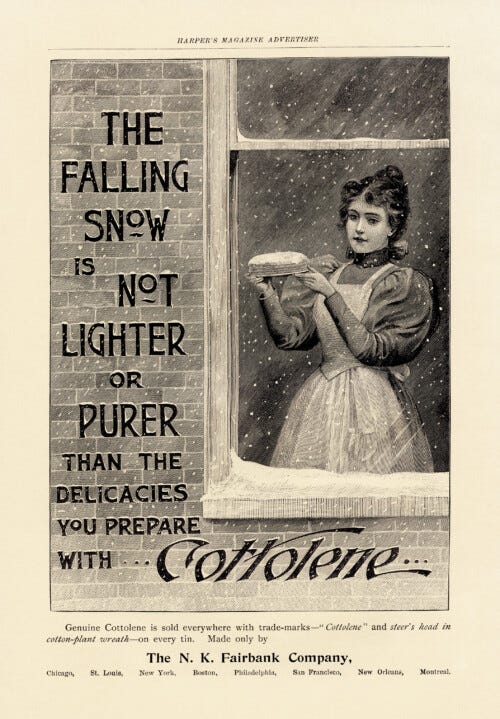
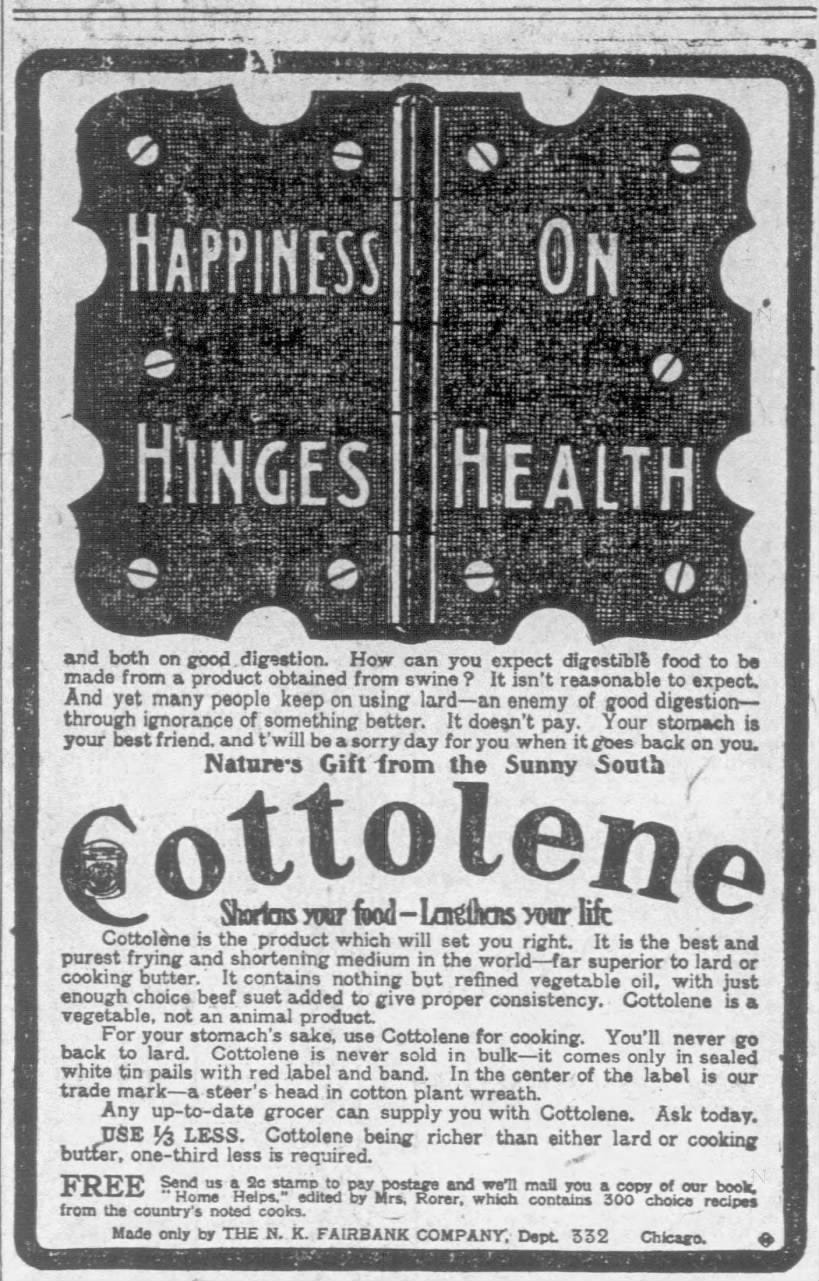
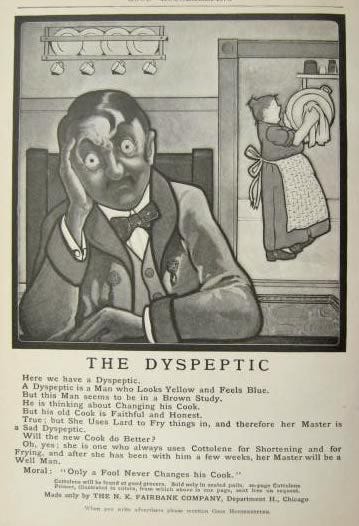
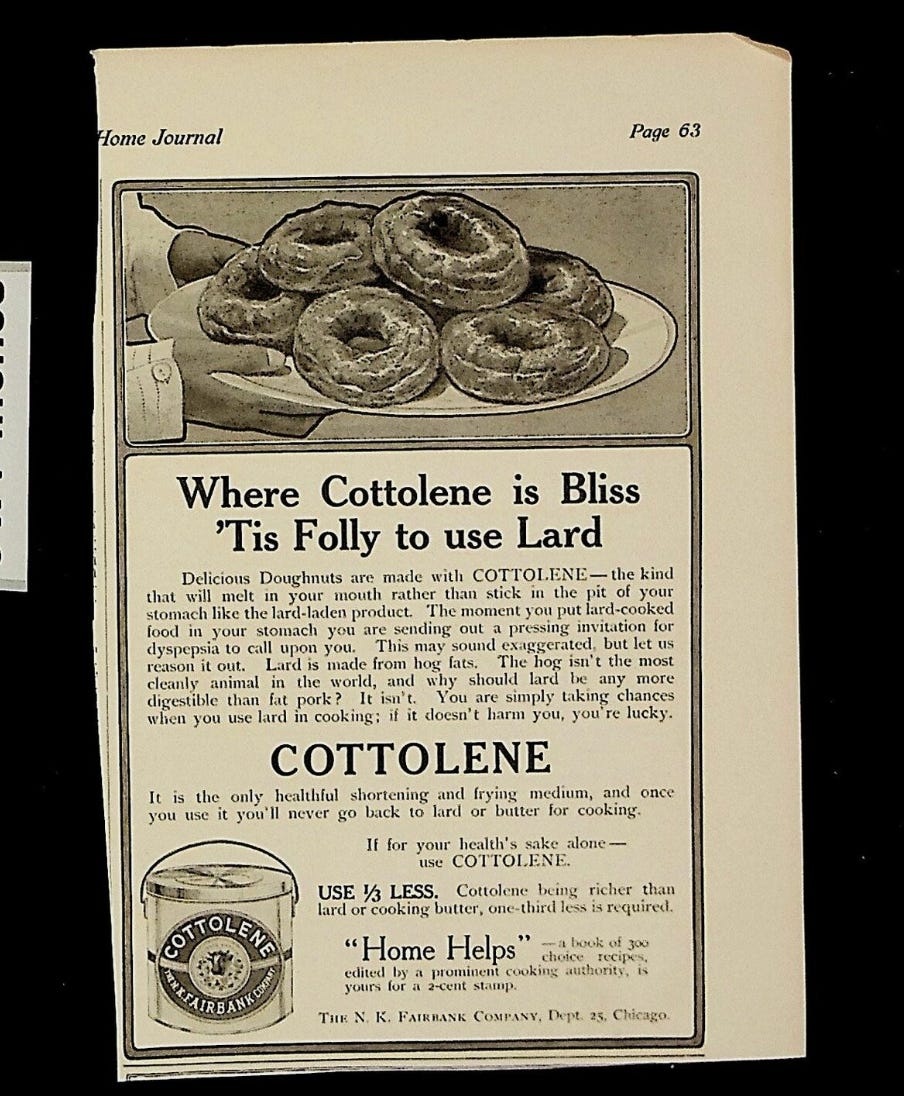

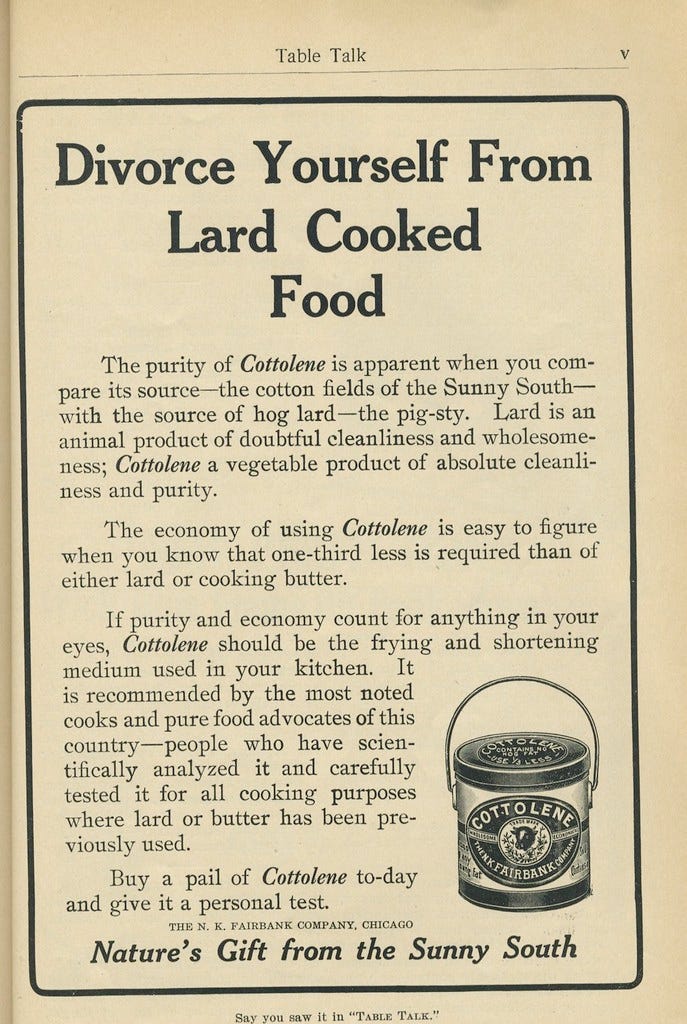


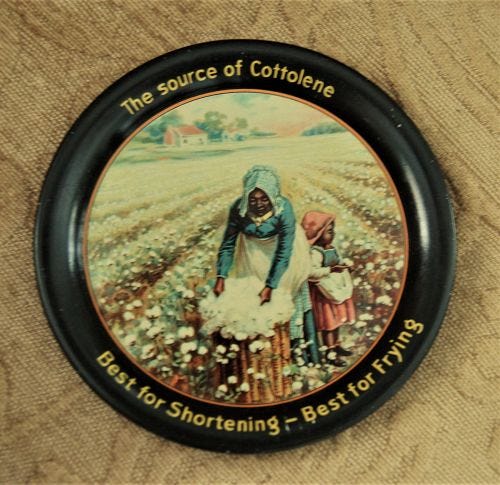
If you liked the newsletter today, please forward it to someone who’d enjoy it, and tap the heart icon above or below, which will help me reach more readers. I appreciate your help, y’all!
Please note: Smart Mouth is not accepting pitches at this time.
This newsletter is edited by Katherine Spiers, host of the podcast Smart Mouth.
A TableCakes Production.




I love advertising for old fats! Not sure how I missed this, but I sure loved it!